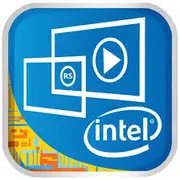Intel Core M-5Y31

インテル Core M-5Y31 2025年:狭い用途向けの旧型チップ
アーキテクチャー:Broadwell、14 nm、TDP 4.5 W — このプロセッサを搭載したノートパソコンを買う価値はあるのか?
アーキテクチャとプロセス技術:コンパクトさはパフォーマンスの犠牲
インテル Core M-5Y31プロセッサは2015年に発売され、Broadwellマイクロアーキテクチャーと14nmプロセス技術に基づいています。これは、Hyper-Threading(4スレッド)をサポートするデュアルコアチップで、基本クロックは0.9 GHzです。ターボモードでは周波数が2.4 GHzに上昇しますが、TDPの制限により短時間の利用にとどまります。
主な特徴:
- グラフィックス:24の実行ユニットを持つ内蔵iGPUインテルHDグラフィックス5300で、最大850MHzで動作。DisplayPort経由で4K出力をサポートしていますが、現代のゲームには対応していません。
- キャッシュ:4MBのL3キャッシュ - 2025年のオフィス作業には控えめなスペックです。
14nmプロセス技術は、2025年には5nm(Apple M2)や3nm(AMD Zen 5)チップが登場するため、時代遅れに見えます。しかし、当時はアクティブ冷却なしで超薄型ノートパソコンを作成できる利点がありました。
消費電力とTDP:静かな動作、しかし制限あり
TDP 4.5 Wは、Core M-5Y31の主な利点です。低い熱放出により、このチップは以下のようなパッシブ冷却デバイスに使用されています:
- 変形型ノートパソコン(例:Lenovo Yoga 3 Pro);
- ウルトラブック(Dell XPS 13 2015)。
しかし、2025年には、インテルAlder Lake-Y(7W)やAMD Ryzen 3 7320U(8W)などのより高性能なプロセッサが同様のTDPを示しています。
パフォーマンス:基本的なタスクのみ
Geekbench 6のデータによると、このチップはシングルスレッドで666ポイント、マルチスレッドで1244ポイントを獲得しています。比較のために、予算向けのインテルN100(2023)は1100/3300ポイントを記録しています。
実際のシナリオ:
- オフィス作業:Word、Excel、5-10タブを持つブラウザの使用が許容範囲ですが、Zoomの同時起動時にはラグが発生する可能性があります。
- マルチメディア:フルHDビデオの視聴(4Kはカクつく)、Shotcutでの軽い編集 — 短い動画のみ。
- ゲーム:Minecraftは低設定で(25-30 FPS)、Stardew Valleyは安定しています。現代のAAAタイトルには対応できません。
ターボモード:周波数は2.4 GHzまで上昇しますが、10-20秒後にスロットリングが始まります。これにより、ゲーム中にFPSが急激に落ちることがあります。
使用シナリオ:2025年にこのチップが適しているのは誰か?
Core M-5Y31は、次の2つのユーザーカテゴリーにのみ適しています:
1. 学生 — ノート取り、ウェブサーフィン、Netflix用。
2. セカンドデバイス — 旅行用のコンパクトなノートパソコン。
適さない場合:
- 写真/ビデオ編集(Lightroomでも処理が長時間かかる);
- プログラミング(Android Studio、Docker);
- マルチタスク(10以上のタブやアプリを同時に使用すること)。
バッテリー寿命:最大8時間だが注意が必要
TDP 4.5 Wにより、Core M-5Y31を搭載したノートパソコンは2025年に6-8時間の稼働が可能です:
- 画面輝度50%;
- 省電力モード;
- 活動内容:ブラウザ、ドキュメント、音楽。
省エネルギー技術:
- インテルスピードステップ — 動的クロック変更;
- C-ステート — 未使用コアの無効化。
しかし、同等の使用時間で、現代のプロセッサ(例:Apple M1)は2倍のパフォーマンスを提供します。
競合と比較:予算モデルにも劣る
- AMD Ryzen 3 7320U(4コア/8スレッド、8W):マルチスレッド性能が+80%、DDR5サポート。
- Apple M1(8コア、10W):レンダリングで4倍のスピード、最大15時間のバッテリー寿命。
- インテルN100(4コア、6W):パフォーマンスが2倍、ノートパソコンの価格は$250から。
結論:Core M-5Y31は、最も安価な現代のチップですら勝てません。
長所と短所
強み:
- パッシブ冷却 — 完全な無音性;
- デバイスの超コンパクトなサイズ(厚さ12mmから);
- 低価格 — ノートパソコンは$200から(2025年の新モデル、あれば)。
弱み:
- 現代のOSには性能不足(Windows 11はリソースを多く要求);
- 長時間の負荷時にスロットリング;
- 現代の規格(Wi-Fi 6、PCIe 4.0)のサポートがない。
ノートパソコン選びの推奨事項
2025年にCore M-5Y31搭載のデバイスを検討している場合、以下に注意してください:
1. ストレージタイプ:SSDのみ(NVMeがSATAより望ましい)。
2. RAM:最低8GB(4GBはWindows 11には不十分)。
3. ディスプレイ:フルHD IPS — HD(1366×768)は2025年にはオフィス仕事向けにも時代遅れです。
2025年のモデル例(可能であれば):
- Chuwi Minibook X — 8GB/256GB、$220;
- Teclast F6 Pro — 12インチディスプレイ、8GB/512GB、$270。
重要! $300-400でインテルN100またはAMD Ryzen 3 7320Uを搭載したノートパソコンが購入可能で、より長持ちします。
最終結論:2025年にCore M-5Y31が適しているのは誰か?
このプロセッサは過去の遺物です。考慮する価値があるのは次の条件の場合のみです:
- 超低価格のノートパソコンが必要で、テキストやYouTube向け;
- 静音性が критично महत्वपूर्ण(たとえば、講義を録音するため)。
主な利点:安価さとポータビリティ。しかし、2025年でも市場にはよりバランスの取れた選択肢があります。Core M-5Y31搭載デバイスの購入を検討する際は二度考えてください - もしかしたら、より現代的なチップのために追加費用を払う方が良いかもしれません。
もしこのプロセッサを搭載したノートパソコンを$200以下で見つけられ、その制限を受け入れられるなら、一時的な解決策になるかもしれません。しかし、長期的な使用には代替品を探した方が良いです。
基本
CPUの仕様
メモリ仕様
GPUの仕様
その他
ベンチマーク
他のCPUとの比較
ソーシャルメディアで共有する
または当サイトへのリンクを追加
<a href="https://cputronic.com/ja/cpu/intel-core-m-5y31" target="_blank">Intel Core M-5Y31</a>